
Experience healthier, better-looking legs with treatment for varicose veins in Boca Raton, Boynton Beach, and covering Palm Beach County, FL.
Varicose veins are characterized by being engorged, purple, and discolored on the surface of the skin. They develop as a result of swollen veins that cause blood to pool in the shallow veins of the extremities. They are most common in the legs and affect about half of all people over 50.
Dr. Schoenhaus, the varicose veins specialist offers a range of treatments for varicose veins including Venaseal, Radiofrequency ablation, and laser vein removal in Boca Raton.
Varicose veins are veins that are twisted, inflamed veins that impede proper blood flow, ultimately causing blood to pool. This happens most frequently in the lower extremities, commonly appearing on the inside of the legs, thighs, or the back of the calves. Sometimes they develop in other parts of the body.
While varicose veins are similar to spider veins, the two are separate medical conditions. Varicose veins are considered a more severe form of venous insufficiency than spider veins.
Varicose veins are caused by weak and damaged valves within the blood vessels that are unable to properly push blood back to the heart. When the valves become weak, blood can flow backward through the veins and pool in the legs.
The condition often develops as a result of standing or sitting for prolonged periods of time, like during travel or work.
Factors that can increase your risk of developing varicose veins include:
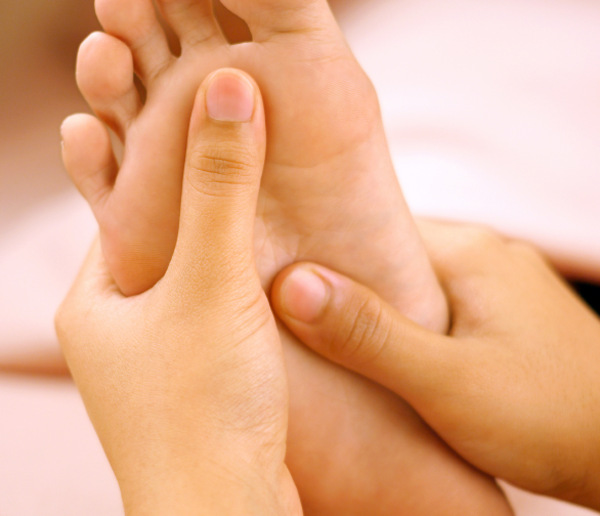
The symptoms of varicose veins range from mild to severe, including:
These symptoms will develop at the site of the vein and can grow more severe over time. If left untreated, it can increase your risk for deep vein thrombosis, blood clots, bleeding, and skin ulcers.

Dr. Schoenhaus may recommend a number of lifestyle changes to help in the treatment. These may include avoiding standing or sitting for long periods of time or wearing compression stockings to enhance blood flow.
When severe, Dr. Schoenhaus, the varicose veins specialist may recommend minimally invasive treatment options, such as laser vein removal, radiofrequency ablation, venaseal or sclerotherapy.
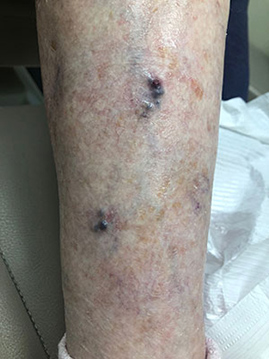
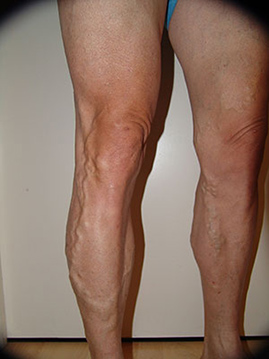
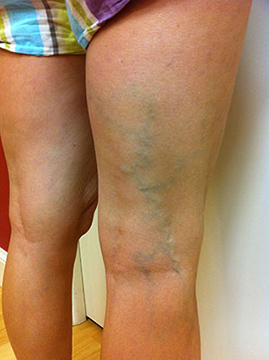
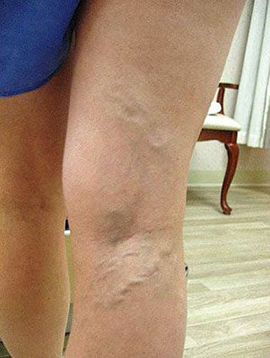
Your questions answered
Varicose veins are characterized by being engorged, purple, and discolored on the surface of the skin. They develop as a result of swollen veins that cause blood to pool in the shallow veins of the extremities. They are most common in the legs and affect about half of all people over 50.
Varicose veins are caused by weak and damaged valves within the blood vessels that are unable to properly push blood back to the heart. When the valves become weak, blood can flow backward through the veins and pool in the legs.
Varicose veins often develop as a result of standing or sitting for prolonged periods of time, like during travel or work.
Factors that can increase your risk of varicose veins include:
The symptoms of varicose veins range from mild to severe, including:
These symptoms will develop at the site of the vein and can grow more severe over time. If left untreated, it can increase your risk for deep vein thrombosis, blood clots, bleeding, and skin ulcers.
To effectively treat varicose veins in Boca Raton, your doctor may recommend a number of lifestyle changes to help in the treatment. These may include avoiding standing or sitting for long periods of time or wearing compression stockings to enhance blood flow. When severe, your doctor may recommend minimally invasive treatment options, such as laser vein removal, radiofrequency ablation, venaseal, or sclerotherapy.